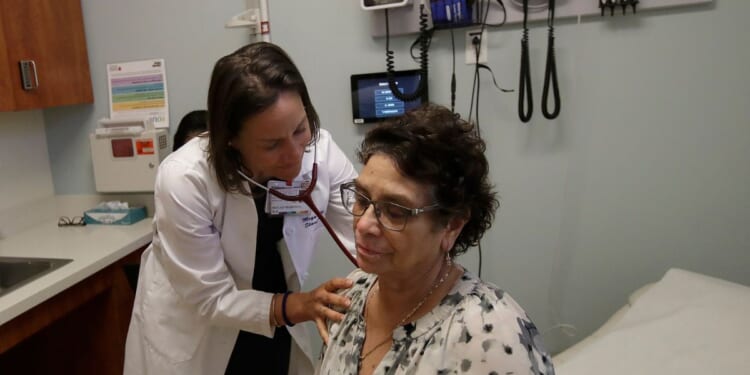Cancer is on the rise in the U.S., most notably among people under 50 years old, according to a new study.
The American Cancer Society on Wednesday published the results of a survey of data collected by the National Cancer Institute since 1973 and by the Centers for Disease Control and Prevention since 1995, concluding that the country should expect to see more than 2 million new diagnosis of cancer in 2024.
The study also estimated that roughly 612,000 people will die of cancel in 2024, a small increase from last year.
Those will be the largest new cancer diagnosis since numbers have been tracked, Axios noted. A “worrying” rise in cancer among younger patients is largely to blame for the record numbers.
There was some good news in the study: cancer rate dropped slightly among those 65 and older, and Americans in the 50-64 age group saw their rates of the disease “largely stable” over the last three decades.
Trending:
Cancer rates among children 15-19 has “finally leveled off” as well, according to the report.
“Notably, people aged younger than 50 years were the only one of these three age groups to experience an increase in overall cancer incidence during this time period,” the survey said.
“We’re seeing a movement of cancer diagnosis into younger folks, despite the fact that there are more people that are in the older populations,” Dr. William Dahut, chief scientific officer for the American Cancer Society, told CNN.
“So cancer diagnoses are shifting earlier,” he added. “There’s something going on here.”
Will cancer cases continue to rise in the U.S.?
“In our clinical practice, we’re seeing patients presenting younger and presenting before ages of screening for many cancers, so it’s certainly a continued concerning trend in the field,” Dr. Scott Kopetz of the MD Anderson Cancer Center in Houston also told the outlet.
As Dahut implied, no one is certain what’s driving the higher incidence of cancer among the youngest Americans.
“When one looks at the totality of the data, it really is a call to arms to really better understand the changing epidemiology of cancer,” Kopetz told CNN.
But since cancer takes some time to develop, it’s likely that whatever is behind the rise in cancer rates, it’s likely happening over decades.
There are, of course, multiple theories.
Researchers are looking into “consumption of red meat or ultra-processed food, medication and vitamin use, and obesity” as possible long-term contributors to cancer, Axios reported.
“As a nation, we’ve dropped the ball on cancer prevention as incidence continues to increase for many common cancers — like breast, prostate, and endometrial, as well as colorectal and cervical cancers in some young adults,” said Rebecca Siegel, senior scientific director, surveillance research at the American Cancer Society and lead author of the report, said in a news release announcing the annual survey results.
Sadly, but perhaps not surprisingly in 2024 America, the ACS recommended more government involvement as a solution to the increased rates of cancer.
“This report underscores the need for public policy interventions to help reduce these cancer disparities and save more lives,” Lisa A. Lacasse, president of the American Cancer Society Cancer Action Network, said in the release.
“We urge lawmakers at all levels of government to advance policies that ensure more people have health insurance coverage as well as improved access to and affordability of care, such as increased funding for cancer research and screening programs. Doing so will bring us closer to our vision of ending cancer as we know it, for everyone.”
Right. Because we all saw how well things went when the federal government got more deeply involved in medical issues in 2020 and 2021.
What could possibly go wrong?













